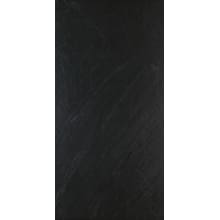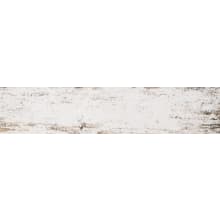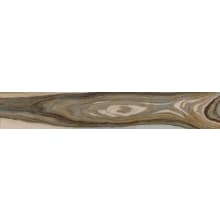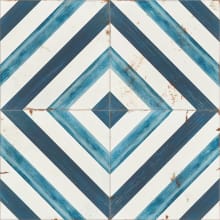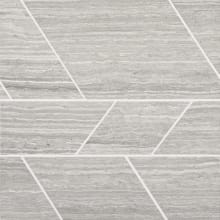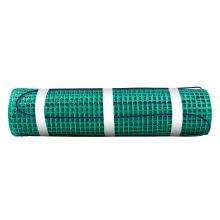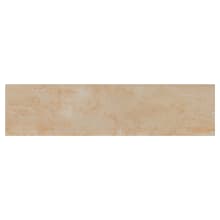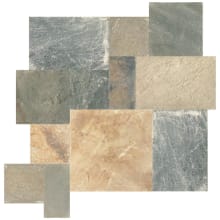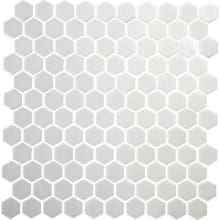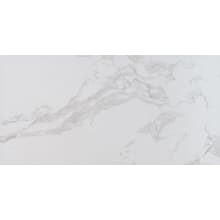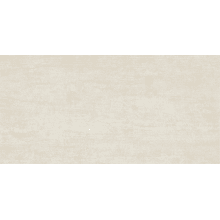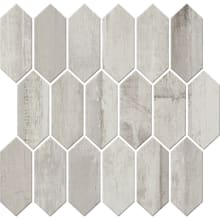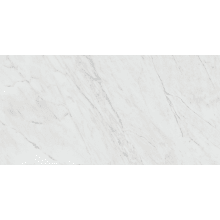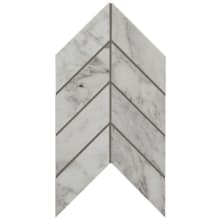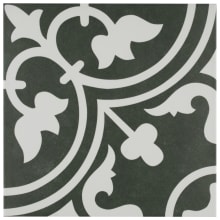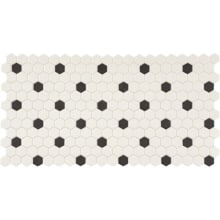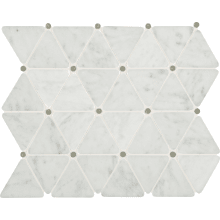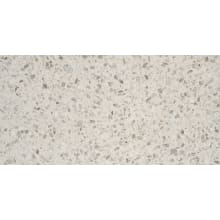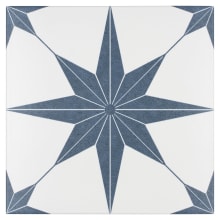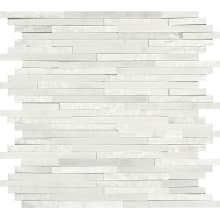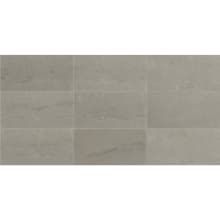Floor Tile Buying Guide
Sync up your floor and decor with new tile. Start here for what you need to know before buying floor tile.
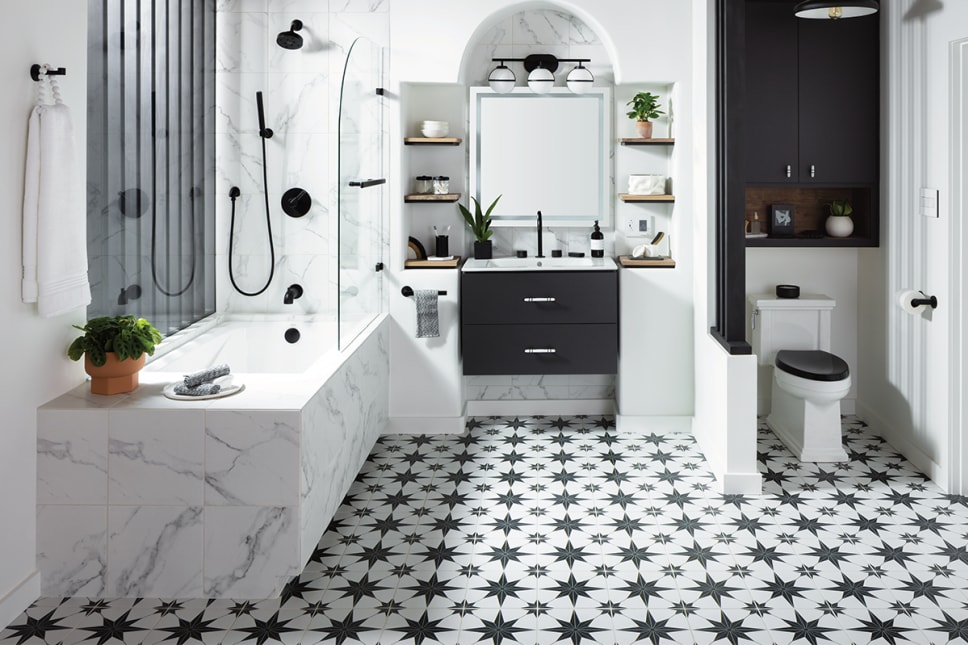
When updating the floors anywhere in the home, one of the first types of flooring to come to mind is floor tile. Stylish, durable, and easy to maintain, a tile floor is an excellent way to boost home value in a single home update that provides years of use that is always on trend.
There are a few things to keep in mind when considering replacing an outdated floor with new tile. With the right installation for the location, and the perfect color, style, and types of floor tiles you choose, a tile floor will last for years. It’s a good idea to know how to get it right the first time.
Advantages of Floor Tile
Not all floor coverings will be perfect in every space, but a tile floor can come pretty close when you choose the right tile. With the right installation, tile floors can be put to use in basements, on the ground floors, or on upper levels of the home. Tile floors are pet-friendly, and make cleaning up after the dust bunnies as simple as using a broom and dust pan. Smart home robotic vacuum cleaners do very well on tile floors.
Because of the nature of how tile is made, there are a few reliable advantages to a tile floor.
- Waterproof -The tile and mortar installation help prevent moisture damage and will not warp or crack with accidental exposure to water.
- Durable - Tile has a high breaking resistance, with a hard, dense composition that holds up to heavy impact stress and regular and commercial foot traffic.
- Scratch and Dent Proof - With the right finish on the tile, pet paws and furniture won’t leave a mark.
- Stain Resistant - Many glazes create a glass-like surface that is impervious to pigment as well as moisture damage.
- Slip Resistant Surfaces - With the option of textured tiles, such as stone-look tile, tile floors don’t have to be a problem on rainy days.
- Easy to Maintain - Sweep up dust and dirt, and wipe up spills with a paper towel. There’s no scrubbing or special cleaners required when the floor is properly sealed and protected.
Tile flooring also offers a wide selection when it comes to color and design choices. Tiles can be fired with individual designs printed on them, or glazed solid colors to set a desired color theme for the room’s new final look.
Floor Tile vs. Wall Tile
Before choosing tile for a floor, it’s important to be aware that not all tiles are made to be installed on the floor. There are many different types of tiles, from floor tiles to wall tiles to backsplash tiles.
- Floor tile is thicker and tested for impact- and stress-strength. It will also have a surface textured to make it safer and easier to walk on.
- Wall tile is kept thin and lightweight to reduce the vertical drag on wall installations, which reduces the strength of the tile. Wall tile is not able to be used on floor installations because it is more likely to break. Wall tile includes backsplash tile, though some backsplash tile can also be used on other surfaces, such as flooring or countertops.
Both types of tile must be mortared and grouted into place, which adds to the weight of the tile when installed against the wall.

To ensure the types of tile you are considering are suitable for your tile flooring ideas, look for the PEI rating. The PEI, or the Porcelain Enamel Institute rating, is an easily referenced scale that measures the suitability of the tile for different types of floor tiles based on the surface traffic where it will be installed. A higher PEI rating indicates stronger types of floor tiles.
Here’s a breakdown of the PEI Ceramic Tile ratings:
- PEI class 1 - These tiles are suggested for wall applications only, with no foot traffic or load bearing for the installed area.
- PEI class 2 - These tiles are for wall applications, or minimal traffic areas of residential bathrooms only.
- PEI class 3 - These tiles are approved for residential use, with light to moderate traffic only, as well as for wall applications.
- PEI class 4 - These tiles can be used for residential floors with moderate to heavy traffic, and as wall applications.
- PEI class 5 - These tiles can be used for residential floors and for medium commercial floors, as well as in wall installations.
It is a good idea to check the manufacturer's warranty on a type of tile, or the installation recommendations, as these will also clearly state whether the types of tiles you’re considering are floor tiles or wall tiles.
Tile Flooring Ideas
More than just color goes into the design of a tile floor. The layout pattern of each floor tile adds to the uniqueness of the room. For a more attractive pattern, and additional stability, most tile floors will have a more linear, grid or staggered layout, with as much as 30% to 50% offset into each row, similar to the installation pattern of a plank wood floor.

There are many types of ceramic tiles that simply won’t fit into the traditional layout pattern, however, and have instead allowed for a variety of layout styles that can inform the types of floor tiles you choose.
Look for types of tiles that could fit layouts like these:

- Basketweave
- Chevrons
- Diamonds
- Grid
- Herringbone
- Mosaics, or Random
- Offset, or Staggered
- Pinwheel
- Versailles, or French

The only limit is your creativity and your resources. Keep in mind that any custom floor tile installation will potentially require hiring a tile installer skilled enough to implement your flooring ideas.
The Types of Tile
When it comes to how to buy tile, the key is to find the types of flooring tile that work best with the look you want for your space. Start by looking at what tile selection is available, gather ideas of what is possible, what types of tile will suit the demands of your household, and what style fits your tastes and budget. Take a look at the basics to inform your best tile flooring ideas.
Tile Materials
If you’re wondering what floor tile is made of, the answer varies by the types of tile. For instance, stone look tiles are likely made from a ceramic tile, while some flooring tile may be made from natural stone, such as marble tiles.
Many different styles of tile are ceramic, which is made of clay, glazed, and then kiln fired to add strength. Porcelain is a type of ceramic tile, with the color often added to the clay rather than only during the glazing process, and it is kiln fired at a higher temperature to make it stronger, moisture resistant, and more resilient overall.
Each type of tile offers different benefits, from the finished look, to the durability of the final product. Here’s a look at what to expect from the different types of flooring tile:
Brick

The rustic look of brick pavers is thanks to a dense, composite clay, dried or fired into rectangular shapes like the classic construction material. Each brick is a unique color blend and will require sealing to keep it water and stain resistant. Brick pavers should be 1¼” thick for floor installations, though thinner brick veneers are available to use as wall tiles.
Cement Tile

Hand-made cement tile is made of a combination of sand, cement, marble powder, and color pigment that is molded and compressed under thousands of pounds of pressure to ensure strength and durability against damage and wear. Cement tiles must be treated and sealed against moisture and stains after installation.
Ceramic Tile

There are many types of ceramic tiles available, such as porcelain tile, subway tiles, and the trendy zellige style of ceramic tile. All of these tiles are made of clay composite, often starting out red-tinted clay bisque, and then glazed and kiln fired at 2000 degrees fahrenheit. This creates a smooth, glass-like surface suitable for floor installation. Matte-finished tile may require sealing after installation.
Glass Tile

Glass floor tile is often used to create mosaic designs and can be found in both individual tiles or as pre-assembled grids on a mesh backing for easier layout and installation. It is then grouted into place, whether for floor installation or as a wall or backsplash addition. Depending on the type of grout used, glass tile likely would not need to be sealed.
Granite Tile
A dense, natural stone tile, granite tile offers a smooth, porous surface with the glitter and shine of quartz crystal in attractive embedded color patterns. Every tile is unique and adds long-lasting property value as it will not scratch or fade over time. Granite tile should be professionally installed and treated against stains after installation.
Limestone

Another popular natural stone tile is limestone, a lighter colored, highly textured flooring that offers a unique look with every tile. Limestone must be sealed upon installation and is not ideal in areas subject to moisture exposure, as it is a softer stone and can fade or lose color.
Marble

The timeless look of marble can be used on floors, walls, countertops, and even shower and bath enclosures. They offer recognizable style and easy maintenance. As with granite, marble tile should be professionally installed and sealed for best results.
Porcelain Tile

When it comes to ceramic vs. porcelain tile, there are a few differences even though porcelain is actually a type of ceramic tile. Porcelain is made of a denser clay bisque, often the same color as the glaze so that the color goes through the entire tile, with additional mineral particles that make it impervious to water after firing. It is fired at a higher temperature than most ceramic, at least 2500 degrees fahrenheit, to make it stronger and more durable. Unique designs and textures can be applied before firing for added style and safety. Porcelain tile can be installed on floors, countertops, and walls, as it is moisture resistant and sturdy.
These are only a few types of floor tiles to choose from. There are many more, so you’re sure to find the perfect style of floor tile for your home.
Tile Shapes
For more tile flooring ideas, consider the variety of tile shapes available. The shape of the tile and the pattern chosen for the layout go hand in hand toward creating a custom floor. Not all tiles are rectangles, which opens up even more layout ideas, from mosaics to simple repeating linear patterns. There are even specialty shaped tiles which have unique edges that can be puzzle-pieced together.

Consider these individual tile shapes and the design impact they might have on your space:
- Circles
- Diamonds
- Hexagons
- Octagon
- Ovals
- Parallelogram
- Rectangles
- Squares
- Trapezoid
- Triangles
The different shaped tiles still need to be fit into a pattern that creates narrow channels between them for the grout. Too much space for grout tends to look messy and unfinished, so it’s best not to mix-and-match tile without a plan. Consistent shapes throughout the room can create a recognizable pattern that complements the look of the room when finished.
Some tile shapes, when combined, can create new patterns. For instance, narrow planks cut at an angle can be arranged to form a diamond shape, which is a good way to make a room appear more expansive by making larger designs out of smaller pieces.
Subway tiles are white rectangular tiles, usually a standard 3” x 6” and arranged in long lines around the room. The same tile can be used in a herringbone pattern to keep the crisp white aesthetic and change up the pattern for interest.
Some small backsplash tile can be used as flooring to create a mosaic floor, but always check the PEI first. It can allow you to create a mosaic mural, by using different colors and tile sizes to move the visual weight around the room without catching attention in one area or another.
Tile floors are limited in design only by the creativity of the designer. With the right shapes, the layout can be interesting and unique, or simple and stylish.
Choosing Tile Sizes for Floors
The flooring should be part of the overall design scheme of a room, but it shouldn’t be a distracting feature. The tile sizes should be proportionate to the size of the room, which of course means that you’ll need to have the exact dimensions of the room as you browse the different types of bathroom tiles compared to the different types of kitchen tiles. A tile size that works well in one room may not work as well in another.
The most common tile sizes include:
- Large format tile - Usually tiles of square or rectangular shape, 15” or larger.
- Square tile - Usually square tiles, anywhere from 2” to 12” in width.
- Rectangle tile - The shapes vary, so they may also have different sizes, with tiles anywhere from 1” x 3” in size, up to 4” x 16” plank tiles.
- Mosaic tiles - Usually tiles 2” or under, whether sold individually or as part of a pre-designed mosaic pattern sheet.
It’s a good idea to get floor tile samples to make sure the size will match the available space. Generally speaking, large format tiles work best in large rooms, such as a dining room or living room. A medium sized kitchen or bathroom would do best with medium tile, both to work with the visual appearance of the room, and to accommodate the corners and edges of cabinetry and doorways. Small spaces are good places to include mosaic tiles, whether bathrooms, entryways, hallways, or as edging.

Certain aesthetics require specific tile sizes. For instance, wood look tiles are available as long, rectangular, plank shaped tiles, to give it the appearance of an authentic wood floor. In contrast, concrete look tiles are large format, square tiles that take up enough space to resemble a poured concrete surface, smooth and flat.
Before Installing Tile Flooring
There is more to tiling the floor than picking the perfect tile. In addition to coordinating accessories to fit the look, or options like underfloor heating, it is very important to consider the installation type.
Tile Floor Installation Type
There are different ways to install a tile floor, depending on the type of tile you choose. The installation method influences the type of tile you buy, and in some cases, the complexity of the project.
You can hire professionals to install tile floors, or if you’re up for a challenge, you can attempt to install them yourself as a do-it-yourself home improvement project on a budget. Either way, expect to dedicate as much as a week to installing a new tile floor. This allows enough time to remove the existing floor, apply new tile, allow it to dry and to cure, and then to apply sealant before the room can be walked on again.

The traditional tile floor installation method requires applying a mortar base to a flat subfloor, laying down the tile with spaces in between the edges, and then spreading grout throughout the channels to level the walking surface. It’s important to lay down a consistent mortar layer and to use spacers to prevent an uneven lippage along the floor’s walking surface, which can leave the tile corners and sides sitting off center and raised over the floor level.
The process of laying mortar, placing grout tiles, and then applying grout can take a few days time, to allow proper drying time and acclimation before each step. Some types of tiles or grout combinations will then require sealing to ensure a protected, long-lasting floor surface.

Another installation option is to choose a floating floor, using interlocking tile that can be assembled and installed over an existing floor. Floating floors require click-lock tiles assembled over a sheet of foam or felt underlayment that protects the tiles and adds a flat cushion and sound dampening insulation.
Most of these click-lock tiles will be found as laminate tile, but some newer porcelain and ceramic tiles have been designed with an attached base tray that allows the tiles to click together in a secure layout, ready to be grouted in place. The base trays create the evenly spaced channel to spread grout into, and an acrylic-based grout will provide durable, waterproof protection without requiring additional sealant. Interlocking tiles cut the installation time down to two or three days.
Different Tile Adhesives
There are multiple types of adhesive methods when installing tile flooring. It’s important to know which type your project will require before you purchase the tile to make sure the floor installation is reliable and secure.
Grout
Grout is the finishing adhesive that holds the tiles in place over the floor, connecting each tile to the other and to the subfloor by being spread over the top of the tiles and into the grooves between them. It is available in two types, sanded grout and unsanded grout. Sanded grout is best used for projects that have built in larger channels, or grout lines, between the tiles. Unsanded grout is for those tiny spaces of less than ⅛” between tile edges.
Mortar
Mortar is a paste created by a mix of cement, lime, sand, and water. It is used to adhere bricks, stones, and tile to the subfloor. It is applied directly to the subfloor, and the tile is placed down into the paste to dry, with spacers in between to create the appropriate grout lines.
Thinset
Thinset is an adhesive mortar that is used to attach tiles to smooth surfaces such as cement or concrete. It is made of fine sand, cement, and water and should only be made in small batches due to the thinner paste and quicker hardening time. It can be used with thin set tile for floor and wall applications.
These are often used in conversation very interchangeably but each type of adhesive handles a different aspect of tile installation. They should not be confused or used improperly.
Radiant Floor Heating
Tile flooring is a good way to cool a room. It is often cool to the touch year round unless an underfloor heating system is installed before the tile is added.

Radiant floor heating is a network of heat-conducting wires, with some older installations composed of heated water or air channels embedded in a concrete subfloor, which provide a steady heat source that allows heat to permeate the tile from below and spread out. The heat source, whether electric, air, or water, is assembled and connected to a standard thermostat system.
Radiant floor heating can cut back on energy use by keeping the floor at a steady temperature that then rises into the room to help keep the air above it warm. For more information on radiant floor heating options for tile flooring, read our buying guide.
Tile Accessories
The final consideration when developing your tile flooring ideas are the finishing details. These include the edges, molding, and transition pieces that are necessary to connect the tile floor to the existing floors in neighboring rooms or hallways.

Edge trims
Edge trims are small, rounded, fitted tile pieces that are shaped to help round off the flat side of the installed tile to round it down to the floor, hiding the side of the tile and the mortar below. It adds a professional, finished look to create a natural border to the tile and removes the hard edge that might otherwise catch at shoes and feet.
Molding
Tile molding is a decorative option that allows the look of the floor tile to accent the base of the wall. It wraps the look up the wall just a few inches to create a smooth bridge between the design of the floor tile and the vertical wall.
Transitions
The transition strip pieces for tile flooring are designed to protect the edge of the tile floor and give it a defined stopping point before the flooring is replaced by another type of flooring. For instance, a transition strip would be used between a new tile floor and an already existing tile floor, or to taper the edge of the tile floor down to the lower height of a carpet floor or wood floor.
These are referred to as accessories, but they should be considered necessary pieces to finish any tile floor project. They can be found in the same types of tiles, colors, and design styles as the floor tiles, or they can offer variety with contrasting or complementary colors.

